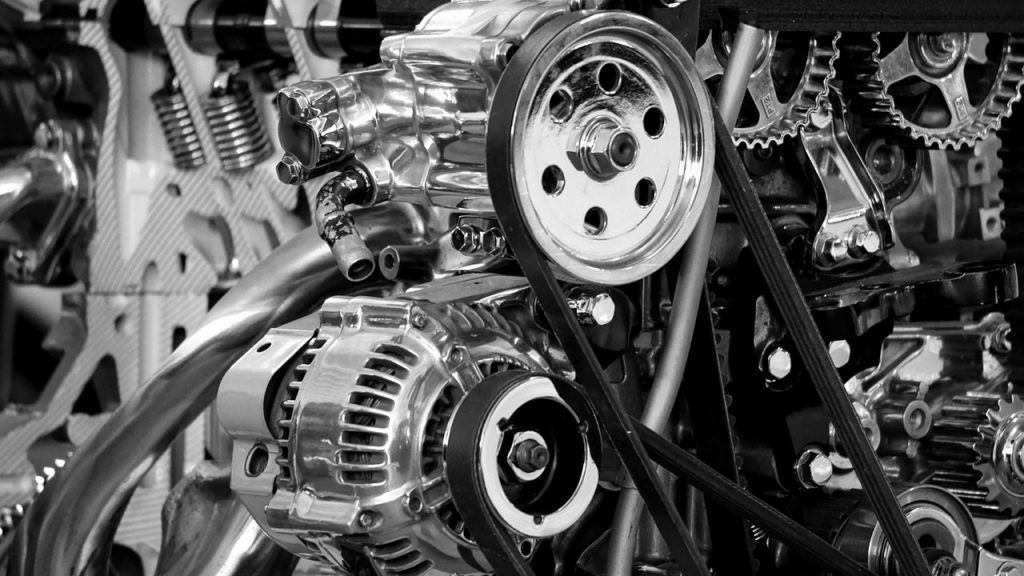Vroom! Vroom! There is nothing really like the sound of an auto’s Engine shooting to life. If you sit behind the wheel and then slide the transmission into drive, the options are infinite. Obviously, most excursions might be to college, work, the supermarket, or the football field. But every once in a while, you may be hitting the road with 4wd equipment to undertake an epic road trip!

If you are usually the passenger in a vehicle, you may not give cars much thought. Should you open the hood or see under a car however, you are going to realize that a modern car is an awesome mix tens of thousands of components that all need to work together in unison to get you from point A to point B.
A lot of people love automobiles, but how many of us really fully enjoy all of the complex, precise manufacturing techniques and super advanced technology that is used when creating the masterpiece that’s the modern vehicle?
It is intriguing to consider how much automobile manufacturing has come from its early days. From oils and tree sap to elctromagnetised paint alternatives, auto production has well and truly been revolutionised by contemporary technology.
We have taken a peek at just how different vehicle manufacturing methods have changed since the first days. Remember — the majority of these revolutions have happened in under 100 years!
When cars were first devised, the very first automobiles were entirely made by hand with merely a couple of employees. These days, however, countless millions of vehicles fill roads all around the world. It is definitely not feasible for every one of these incredibly intricate and technologically advanced machines to be produced by hand with a few employees, especially with new models often having optional features like car leather seats for a price. So just how are cars produced now?
Although modern auto manufacturing techniques are clearly far more sophisticated than they had been more than a century past, one crucial thing stays at the center of the procedure: the assembly line. Instead of needing one employee to complete numerous tasks to finish the assembly of a car, the assembly line permits the car to travel down a conveyor belt into individual channels, where employees perform a specific task on every car as it travels beyond their channel.
In this manner, vehicles could be constructed quickly and economically. Employees specialize in a certain undertaking, getting more proficient and faster in its own conclusion. This procedure also enables many vehicles to maintain production simultaneously.
The Individual normally credited with all the procedure for utilizing Assembly lines to manufacture cars economically is Henry Ford. At his very first mill, a Ford Model T automobile could be constructed from beginning to finish in slightly over 90 minutes.
The Idea at the heart of the assembly line and auto-manufacturing is the division of labor. Long ago, a commodity could be produced by one artisan who’d perform the whole job from beginning to finish by himself. At a division of labour system, nevertheless, all of the manufacturing steps are broken up with lots of folks finishing small pieces before the item is complete.
Modern cars include tens of thousands of components. For Example, one car assembly plant may get part out of as many as 4,000 external providers. From essential parts of tires and metal to digital circuits and glass and plastic components, to more complex 4×4 accessories and unique features; it would be impossible for any sole person to create or even build each of these complicated, specialized bits into a complete, working automobile.
Division of labour allows cars to be constructed more quickly and efficiently, in addition, it enables them to be made more cheaply. Henry Ford’s developments into the assembly line method enabled automobiles to be made for a cost that enabled the typical American to reach the open road. Subsequently, American culture has been altered as travel became increasingly widespread and popular.
Although modern assembly lines still operate on the very same fundamentals perfected by Henry Ford within a century ago, today’s cars reap the benefits of innovative technologies which continue to make procedures more efficient. By way of instance, robots today perform lots of the simple, repetitive jobs that was achieved by humans. Moreover, automatic carts controlled by computers are actually utilised to shuttle goods between channels where human employees perform their technical tasks such as leather car seat installation.
Automobile models and production techniques have certainly come a long way for the greater good, and they are definitely still advancing. Modern automobiles are safer, easier to drive, longer lasting, and several versions are better for your environment. The Technology used to create an automobile will continue to shift because the cars being fabricated change. Nowadays, a growing number of vehicles feature electrical battery systems to enhance fuel efficiency by decreasing reliance upon petrol engines. As electrical cars become more prevalent, manufacturing procedures will need to change to adapt the most recent technology. We are eager to see exactly how innovative and futuristic automobile versions may get.
